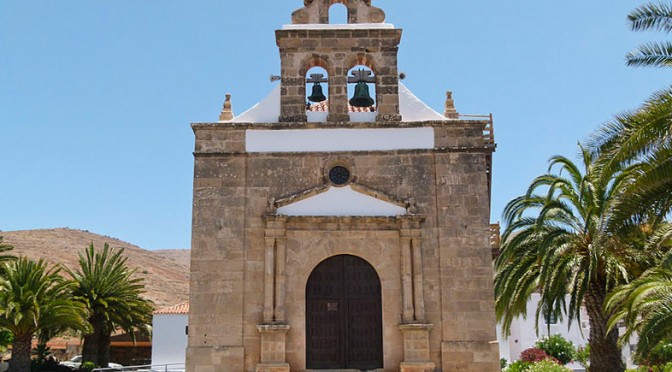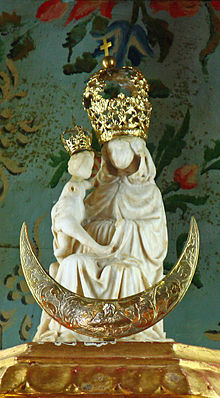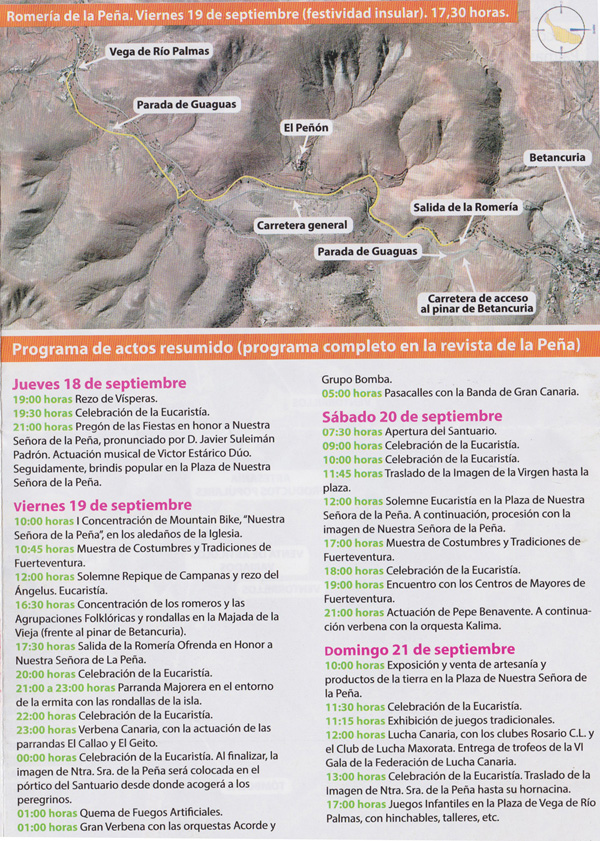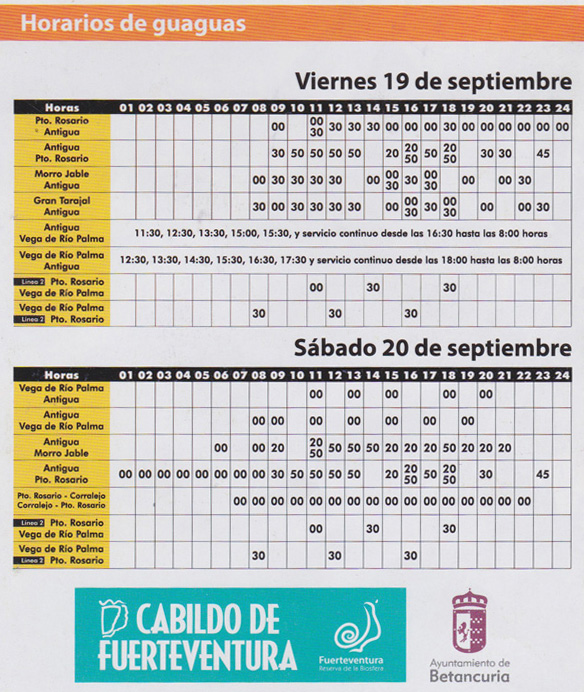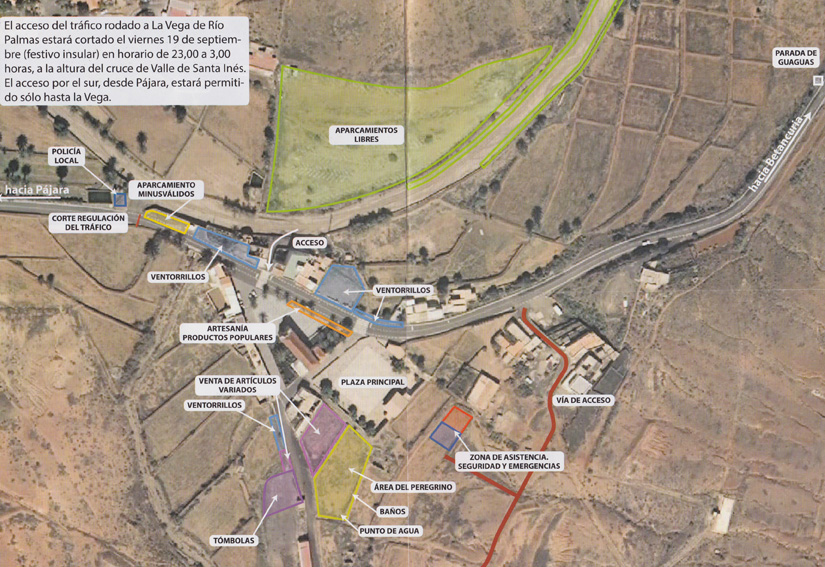From the 80’s in the XIX Century the pilgrimage to La Peña has been celebrated every third weekend in September. This is one of the most popular ceremonies for “majorero” people, framed within the festivities of “Virgen de la Peña”, affectionately known as “La Peñita”, patron saint of Fuerteventura since the XVII century.
The image of this Virgin is one of the Virgin Mary, Gothic French style and carved in alabaster by an unknown sculptor. It was brought to the island in the XV century by the Norman Conquerors, when they founded Betancuria.
It’s the oldest image of the Virgin in the Canary Islands after the image of “La Virgen de la Candelaria”, patron saint of The Canary Islands in Tenerife, disappeared in a heavy storm. It was dated from the XIV century.
“La Peñita” gets this name after having been found by San Diego de Alcalá and Fray Juan de San Torcaz, Franciscan monks who inhabited the convent of Betancuria in the XVII century, in a cave that was hidden at the foot of a rock, in the ravine of “Malpaso”. According to the legend, the image may have been hidden there so it wasn’t stolen or destroyed by the “bereber” pirate Xabán, who devastated and destroyed the village of Betancuria in 1593.
The miracle of finding this image made it possible to build a little chapel in the very ravine where the carving of the Virgin was found, and the faithful went on pilgrimage to “El Barranco de Malpaso” for a long time, to present their prayers and offers to their dear Virgin. Until one day they were aware of how difficult it was to access there and also realised that the image of the Virgin was deteriorating in that chapel because of the humidity and they decided to build a new chapel in the neighbour village of La Vega de Río Palmas, which is the chapel of “Nuestra señora de la Virgen de la Peña”, inaugurated in August 1716, a place easy to access where all the devotees have the chance to visit “La Peñita”.
This chapel, with a classicist stone façade, houses the main altar that keeps the Virgin in a niche framed by a silvery sun, with a crescent at her feet. The image is white, maybe due to the bleaching of its pigments over the years, and it presents the Virgin and child on her knees.
The festivities of “La Peña” Virgin started to be celebrated on the 19th December, since 1599. By then, believers coming from all over the island came to the chapel in “El Barranco de Malpaso” but, due to the rainy season at those times often the attendance wasn’t very massive, as people took advantage of it to sow, and also because the water running down the ravine made it difficult to access the chapel. So, it was suggested changing the celebration to the 5th August, and later on it was fixed on the third week in September.
Nowadays these festivities are still celebrated on December 18th, and on August 5th “La Peña chica”, although at a local level, the festivity of the island being celebrated in September.
The Friday preceding the third Saturday in September (this year it was Friday 19th) thousands of “majoreros” from different points in the island set off on pilgrimage to the chapel, where they celebrate the different masses on Saturday and the Virgin is taken in a parade around the streets of the village. Some come on foot, some others ridding a donkey or camel to queue if front of the chapel of their dear Virgin, whom they lavish with flowers, prayers and offerings.
The festive atmosphere is provided from the very beginning by local musical groups, pilgrims, folksong associations and bands of musicians that provide their music and lyrics, some of them related to the celebration, as worship of the Virgin, some of them just emotional, like “isas” and “folias”, and even some playful songs such as “polcas”.
In the village they even adapt some spaces as roadhouses where you can taste delicious goat meat, “papas arrugadas”, nougat candy, caramel-coated almonds, pineapples of almonds or peanuts. Here you have the program of activities and a map of the area together with the bus schedule for those special days.
FuerteCharter’s Team
